
33 minute read
FEATURES
Warramba Dhulubang (Murray Turtle Spirit) (30cm x 40cm) By Dylan Barnes
This painting depicts a Murray River Turtle swimming in the far South of Wiradjuri land. Every scale on these turtles and every pebble in our rivers has a rich history behind them and by understanding their natural beauty, we can reflect on the strong and vibrant culture of the Wiradjuri people.
Advertisement
FEATURES
Too White to be Black
Great Grandmother
Grandmother
Mother I think I was about 14 when someone said these exact words to me – “You’re way too white to be anything close to Aboriginal.” I was enthusiastic because my sister was planning on entering Macquarie Uni through the Warawara Indigenous Unit, and I went around school telling all my friends about how exciting it was to be officially recognised (though I had no idea what that really meant). Every single friend knew my sister – she was blonde, paler skin than me, nothing to the naked eye that could identify us as Aboriginal, and yet that’s what we were.

As I was proudly telling a friend about what was happening, that’s when she spoke those words to me, and I stopped talking. I just remember sitting there and asking, “What does that mean?”
“Your sister is paler than you, and your mum is white, I’ve never met your dad.”
“My dad has darker skin.”
“But how do you know?”
I pulled out my iPad and showed her a photo of my grandmother, darker skinned, with curly hair and features that were unmistakably Indigenous. This friend, she wasn’t trying to be malicious to my knowledge, but it speaks to a larger problem – one that Australia needs to confront.
I’m only 21, and while I am proudly Indigenous, I am careful with who I reveal this to – among friends around my age group, I am very open about my identity, but as we begin to get to middle-aged
generations and older, I am more reserved unless it is already known to them. As the world is currently following the Black Lives Matter movement, it has put into question my reservations of my own Indigenous identity and how little I have previously fought for Indigenous rights, my own rights. It called into question how little I have been educated in my history and how little Australia discusses some of its darkest points.
250 years ago, Captain James Cook landed on the shores of Australia and later declared it terra nullius, “land belonging to no one,” despite the fact that he encountered Indigenous inhabitants. Despite Australia’s best attempts to not call this what it is, Indigenous Australians experienced a systematic genocide at the hands of the European settlers and the White Australia Policy. Generations of kids were stolen from their families by the government, including my great-grandmother, who was born in Warren, 114km outside of Dubbo, to a white couple from Manly who had suffered many miscarriages. From family reports, she was told not to question her darker skin, and much of her community said that she looked like she came from the Islands, due to her frizzy hair and dark skin – because who would have an Indigenous child? This was part of the process of assimilation, to be Aboriginal or Torres Strait Islander was not allowed in Australia, and the intention of assimilation was to Westernise and convert Aboriginal children to Christianity and pass it down through generations.
These generations of stolen children were either adopted into white families very young (such as my great-grandmother) or kept on missions if they were older, where they were taught to give up Aboriginal Spirituality. These generations received an apology by the Australian Government in 2008, something they had asked John Howard’s government to do but he had flatly refused. After Kevin Rudd’s apology in 2008, Howard stated that he “[did] not believe, as a matter of principle, that one generation can accept responsibility for the acts of an earlier generation,” and disagreed with the 1997 Bringing Them Home Report, which stated that the forcible removal of children after 1946 amounted to genocide under the Universal Declaration of Human Rights. While his current generation may not be at fault, it was the actions of the Federal Government, State Governments, police services and churches that led to the legal forced removal of Indigenous Children for over 60 years, and it had to be acknowledged.
After the National Sorry Day in 2008, it appeared the government patted itself on the back, implemented plans to “Close the Gap” between Indigenous and non-Indigenous Australians and had managed to compensate for the lasting effects of the Stolen Generations. Yet, in 2008, Indigenous children were still 6 times more likely to be removed for child welfare reasons, and 21 times more likely to be in juvenile detention centres. A 2018 report, based on statistics from 2016-17, stated that 58.7 per 1000 Indigenous children were still being removed from their homes compared to 5.8 per 1000 non-Indigenous children.
It’s a reminder of how privileged I am to be fair skinned – how I can, and should, fight for other Indigenous Australians because it’s disgusting how much we have let happen to Indigenous communities. How they live isn’t a “lifestyle choice,” no matter what Tony Abbott believes, it is a poverty our government has kept them in, especially in rural communities. Australia has a dark and bloody history that we are uncomfortable facing; the actions of our ancestors, whether from the First Fleet or after, are still affecting our
society now. It is two very bloody centuries of genocide and assimilation, of building a system that ultimately benefits those of European heritage (or to put it simply, those with fair skin), that has led to Indigenous communities living in poverty and in prison, and Australia has let that happen.
I still remember someone asking why Indigenous Australians are complaining so much about their situations when the government has already apologised – and it’s this that has led us to the present Black Lives Matter movement. They may have apologised for their actions, but they sure have not done as much to change the situation – Indigenous people are 3% of the Australian population, and yet they are 28% of the prison population (according to 2018 statistics); an estimated 31.4% of Indigenous Australians live in poverty, especially in rural communities who do not get as much support; and the Indigenous life expectancy is significantly lower than those of non-Indigenous backgrounds by a minimum of 10 years. Despite what some Australians believe, the gap has not been closed, we do not get everything for free, and yes, we are dying at higher rates in custody than you think.
As of June 5th, 2020, 437 Indigenous people have died in some form of police custody since 1991. That is 15 deaths per year. And yet we still have to fight to be heard and seen as humans. This may seem like a long time ago in the time of 2020, but only last year, NSW One Nation Leader Mark Latham proposed that Indigenous people take a DNA test to prove that they were (in his words) at least 25% Indigenous. On June 11th, 2020, Scott Morrison did say that the colony in NSW was founded to be without slavery, and that slavery in Australia did not exist. However, despite what both these men said, I can exist as an Indigenous Australian and be fair-skinned, Mr. Latham, and slavery did exist in Australia, Mr. Morrison, as Indigenous men were chained up and forced into labour to work on sugar cane farms and become stockmen.
Why does being Indigenous seem to mean that I am somehow less human? Why do I have to fight some people just to be recognised as I am? Why should other Indigenous Australians have to fight just to live? To be heard and seen? Not all of us are black, but we still get their experience, their pain is our pain. It shouldn’t have taken America burning for Australia to wake up – and we cannot keep denying that what has happened in America does not happen here.
Senator Pat Dodson, a commissioner on the 1991 Royal Commission into Aboriginal Deaths in Custody, recently said in the Senate, “For too long – nice words, good intentions – but the lack of action and commitment has not seen a reduction to the custodies or the deaths in custody.” Don’t let this issue go to the back of your mind again. We must commit to fully ending this for our future generations, as Australians.
Indigenous lives matter, now and always.
And don’t forget, the land you stand on always has been and always will be Aboriginal land.
by Gabrielle Green
Epiphany in Épernay
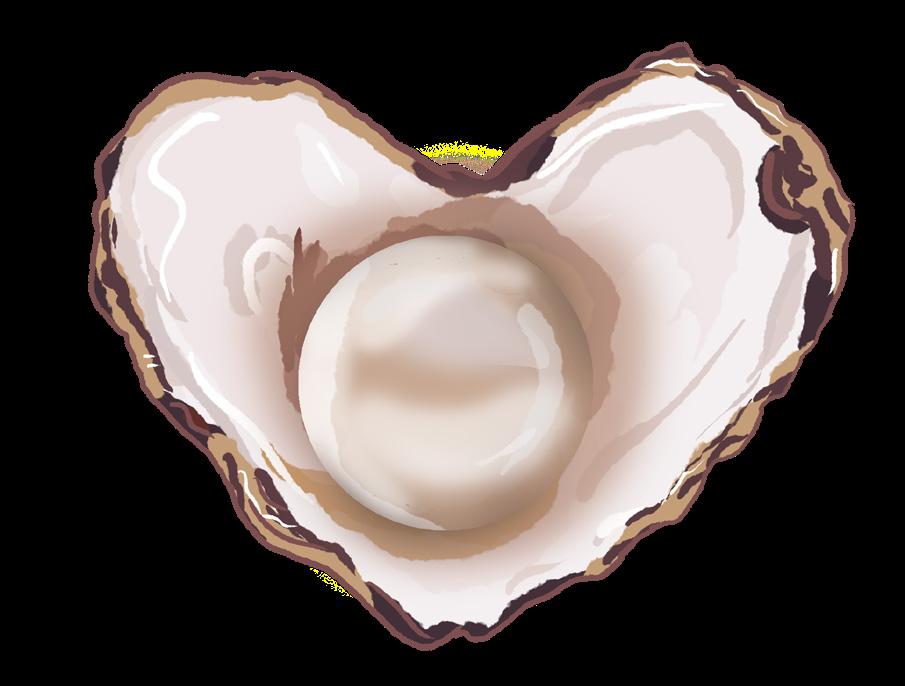
The first language we learn has been called our heart language. When my father went to school in Cowra, on Wiradjuri land, he would have been given physical punishment for speaking Wiradjuri. Thankfully I now own a Wiradjuri dictionary. This is due to the hard work of Elders who have preserved and now teach Wiradjuri.
Our heart language is important – in Aboriginal and Torres Strait Islander communities there are words that describe things in a way that English fails to grasp. People talk about “The Dreaming” as if it were a myth. The Dreaming is much more and includes law and lore.
This quote is one summary of the feeling about language:
“Our language is like a pearl inside a shell. The shell is like the people that carry the language. If our language is taken away, then that would be like a pearl that is gone. We would be like an empty oyster shell.” – Yurranydjil Dhurrkay, Galiwin’ku, North East Arnhem Land (Elcho Island).
The current state of Indigenous Australian languages sees only 13 still being learnt by children. Some of these children in remote parts of Australia will enter school speaking 3 or 4 dialects and very little English. Before 1788 more than 250 Indigenous Australian languages including 800 dialectal varieties were spoken. Roughly another 100 or so are spoken to by older generations, with many of these languages at risk as Elders pass away.
The concept of a heart language was understood by some of the early missionaries who, with the help of Elders, translated Bible passages into Indigenous languages. Some of these early passages are in a book held by the Macquarie University Library. The introduction reads: “This volume is issued by
the Government of NSW, as a record of the languages of native tribes that are rapidly disappearing from the Coasts of eastern Australia. John Fraser 1892.”
For some time I had been aware that to codify a language, translating the Bible into that language would not only systematically arrange the language but preserve it too. A prime example is the translation of the Bible from the original languages into French by Jean Cauvin. The French are very protective of their language and have an institute devoted to the preservation of the language. This institute has fought long and hard to reject introduced words from computer communications and other languages, sometimes without success.
The French might agree with this quote:
“Strong cultural identity enables one to feel proud of themselves, and speaking and maintaining one’s language raises self-esteem and enables one to feel good about themselves. Traditional language is important for maintaining strong cultural connections. Where traditional languages have been taken away from communities, a sense of loss, grief and inadequacy develops. To keep communities and generations strong, traditional language being passed from one generation to another is vital.” – Brooke Joy, descendant of Boandik people from the Mount Gambier region in South Australia.
Our languages are not dead and there are many people preserving them. ‘This Place Project’ produced by the ABC in partnership with First Languages Australia does just that. Across Australia, places are known for their Aboriginal and Torres Strait Islander names. But what do they mean? What’s the story behind them? From the name of a town or suburb, to a street or bridge, a creek or a bend in the river, mountain, landmark, outcrop, tree – place names are a starting point for sharing Australia’s Aboriginal and Torres Strait Islander history and cultures. ‘This Place’ invites Aboriginal and Torres Strait Islander people to create a short video about a place name, and the story behind it.
Another important resource for the preservation and revival of these languages is the Australian Indigenous Languages Collection maintained by the Australian Institute of Aboriginal and Torres Strait Islander Studies (AIATSIS). The collection brings together over 4,500 items such as children’s readers, bible translations, dictionaries, grammars, vocabularies, works of imagination and learning kits in 200 languages. The collection’s significance was recognised in 2009 when it was added to the UNESCO Australian Memory of the World Register.
The Bible looms large in the preservation of languages. The Aboriginal Bibles site is a collaboration of Bible Society Australia (BSA), Wycliffe Bible Translators Australia (WBTA) and the Australia Society for Indigenous Languages (AuSIL).
The French language is a great example of codifying and establishing standards. In English we have the Oxford English Dictionary as our authority. In France they have the French Academy, started in 1635 to eliminate the impurities of the French Language. At the core of the establishment is the translation of the French priest Jean Cauvin’s translation of the Bible into French. Translation of the Bible into languages other than Latin have in turn codified many other languages, in particular our First nations languages.
While different policies of suppression were applied to First Nations Languages across Australia it was the highly educated missionaries who were driven to share their beliefs, who defied government policy by learning the languages where they were posted and then translating parts of the Bible into those languages. These missionaries could see and understand that the heart language of the local people was the best way to understand their beliefs. One example is L.E. Threlkeld who was a missionary around Lake Macquarie in NSW. He learnt the language and not only translated sections of the Bible but appeared in court with the Awakabel people to explain proceedings to them.
In Gunbalanya Northern Territory, they now have a New Testament with a few Old Testament books that took 70 years to translate. It is the mother tongue of the tribe who adopted my wife and her family the Gunwinggu of Western Arnhem Land. The final collaboration included linguists from Charles Darwin University along with Elders and the Anglican Minister in Gunbalanya Lois Nadjamerrick. This translation took so long because it had to be culturally safe as the structure of the Gunwinggu language is very different to and uses expressions not found in English or the original languages of the Bible.
My mobs are by birth the Galari Tribe of the Wiradjuri Nation at Euabalong and by marriage the Kunwinjku Tribe of Western Arnhem Land. Galari is the name of the Lachlan River in Wiradjuri and to highlight the difficulty in preserving the integrity of a First Nations Language, Galari has become Calare as the name of the NSW electorate that started near the Lachlan River but has moved east with boundary changes and now is around Bathurst, Lithgow and Oberon. This highlights the complexity of our languages and the need to systematically make sense of them. There are snippets of our languages in place and street names. My father was born in Wombat street Forbes. Yet using street names as a way of preserving language is not specific to Australia. In Ax-en-Provence, France there are street names in French and the local Provençal, also known as Occitan which some people still speak.
Like Australian Indigenous languages, over 200 years of suppression has seen this language rarely spoken outside homes. Travelling back through France close to the town of Épernay I had my epiphany! If the French, who treasure their language can tolerate the use of both languages then so can our local councils by allowing original Aboriginal and Torres Strait Islander names to be displayed on streets and places of significance.
by Wayne Charters
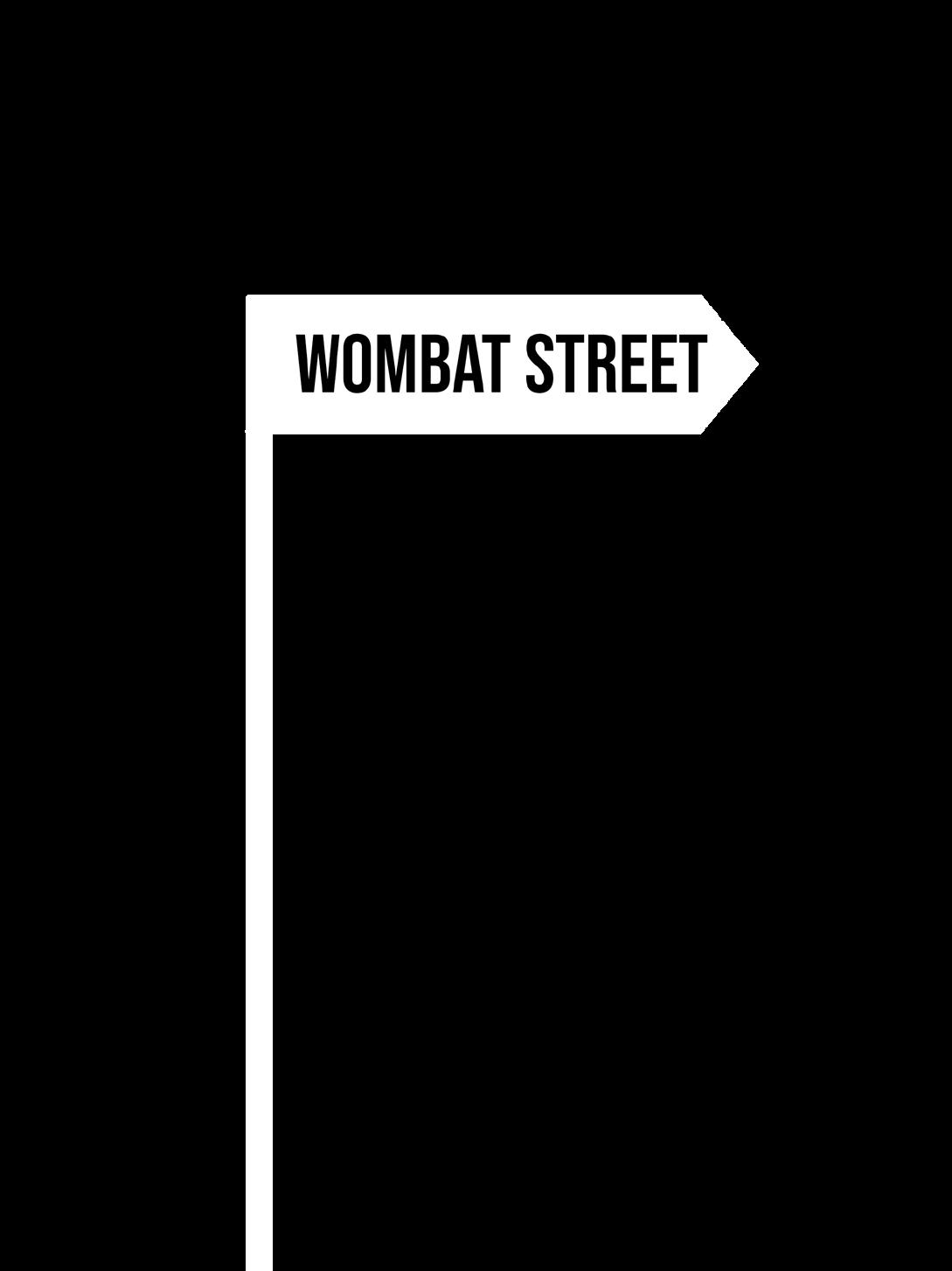
Profile: On Indigenous Women in Leadership and Education
Grapeshot in conversation with the current President of the Indigenous Students’ Association of Macquarie University, Natasha Balsdon.
The ISA is a cultural group on campus that aims to carry on important conversations around Indigenous culture and history between Indigenous and non-Indigenous students. The process of reconciliation and reparation has a long way to go, but through sharing and understanding the group hopes to encourage this process of growth within our university and wider community.
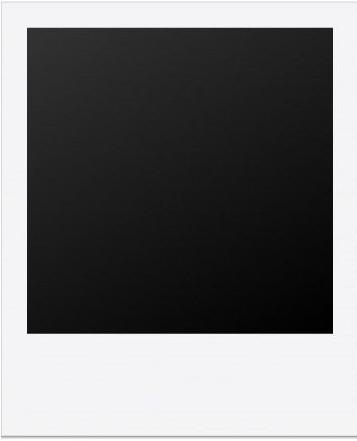
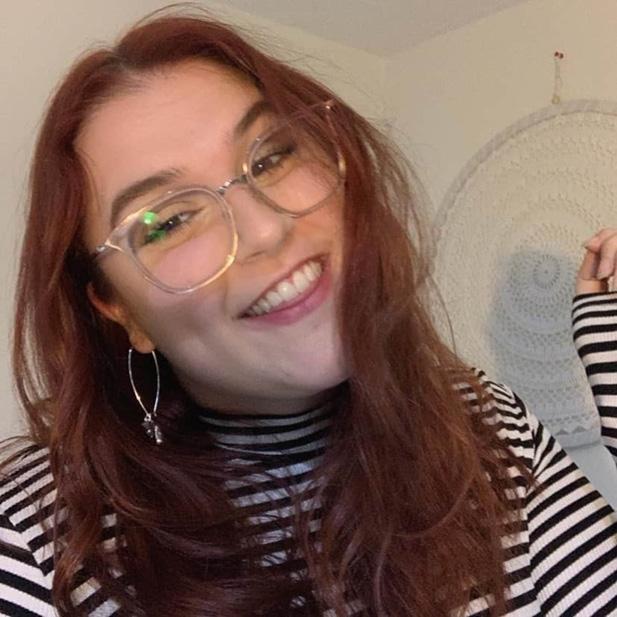
What does your role as President of the ISA involve?
As the president of the ISA I am ultimately responsible for the ISA as a whole. This means that I am responsible for running meetings, the correspondence between ourselves and the University or other parties we may be dealing with.
Would you be able to explain the importance of having your voice heard within the University community?
Since becoming President at the beginning of this year, it has been quite difficult for us as a student group to have a physical presence because of COVID-19. But in the future, I hope for the ISA to have a stronger voice within the student body. Indigenous students of Macquarie University are extremely lucky to have such an amazing Indigenous centre in Walanga Muru which has such an amazing presence on (and off) campus!
Has your perception of yourself, as a young Indigenous woman in a perceived position of power, altered?
Not particularly, I have definitely become more aware of what I share on Facebook and Instagram. I think because of COVID-19 it has made this a lot different. As all of our ISA meetings and events have been done online for most of this year, I haven’t really felt like I was, ‘in charge,’ as such. I am sure that when we are able to hold and go to events as well as have meetings face-to-face again this will change, but for now I’m just Natasha who can’t seem to use Zoom!
My journey to President was quite sudden and unexpected. I have been a member of the ISA since 2018, and stepped into the role of Media and Communications Manager halfway through 2019. I applied for the position of Vice President for 2020 and started this year in the position. Unfortunately, in an unforeseen turn of events, the then President had to step away from the Executive Team which meant I had to step up into the role of President very quickly. There were no struggles per se, but I did doubt myself and how well I would do as the President. But since stepping up, I have loved every moment and am so grateful to have such an amazing Management Committee supporting me personally and in the position of President.
Has leadership always been something you have aspired to?
Yes! Ever since I understood what a Prime Minister was, that’s who I’ve wanted to be. Working my way through the ranks to the leader of Australia has always been an ambition of mine. For as long as I can remember, I have always been someone to take control of situations and boss everyone about (but in a nice way, I promise). Leadership to me is something that can be achieved at so many levels, whether those be as extreme as becoming the Prime Minister or just ushering someone to move registers at the supermarket. Little acts of directing people to do better is something that I have seemed to do my whole life and I don’t think that it will stop anytime soon.
Who are your role models?
I have so many people in my life that have inspired me or guided me throughout. I am so grateful for everyone who has guided, taught or helped me along the way. But two of my main inspirations would be:
My Mum, Sue. She is an amazingly strong woman with such passion and drive for everything that she does. My Mum and I are so alike on so many levels and I could go on about how terrific she is forever. If I can be half as brilliant as she is, I think I will turn out okay.
And my favourite high school teacher, Ms D. She was such a down to earth educator who taught in such a comforting and supportive way, she encourages her students to do their best in such a kind, heartfelt and sincere way. I learnt so much from her but in such a unique and memorable way. We would learn creatively and in such an unconventional way which made it so much more enjoyable as a student in high school. She taught me for different subjects throughout high school and made every single one so much fun and I thank her for all her support and guidance throughout my high schooling years. She really has shaped the way I wish to teach students and I am so grateful for our paths crossing!
You are studying a degree in primary education. In what ways do you see education playing a role in cross-cultural communication? [For example, in bridging the gap in White Australian education and Indigenous education]
I feel as if bridging the gap between Indigenous and non-Indigenous education is simple.
Engage Indigenous scholars, teachers, and Elders, in the creation of resources, syllabus and curriculum that will allow everyone to learn about Indigenous culture, history and everything in between. Cross-cultural education plays a large part in the education that children have of other cultures, not only First Nations culture, but the history and customs of so many others. This is an eye-opening moment for students and allows them to learn about their peers and the history of where their families may come from. It is so important for cross-cultural education in Australia as we are such a multicultural nation which makes us so unique, so our education system should be able to accompany that.
Can you comment on the levels of power that currently pervade our education system in Australia? Whether they be negative or positive?
I feel as if the people who are making decisions for Australia’s youth are quite out of touch with what actually goes on in their everyday lives. There are a lot of people in positions of power who have been there for ages, and haven’t spent a lot of time in a classroom setting to see how students are interacting with the set curriculum and syllabus. There are definite positives of the current education system, but unfortunately there are also some major negatives which need correcting.
In your opinion, how should primary schools teach their students about Indigenous culture and history?
Indigenous culture and history are two very important things that Australian students unfortunately don’t get taught to the greatest potential. Firstly, there should be a part of the curriculum that explicitly addresses Indigenous culture and history. In this topic, educators could call in local Elders, members of the local Land Council or the school’s [if they have one] Aboriginal Education Officer for some insight into the topic and give the students a more personal experience with Indigenous culture and history. If educators are nervous about teaching their students First Nations history, there are so many resources available to assist you and so many people you can seek assistance from and in my experience so many people are willing to share their knowledge, especially to children.
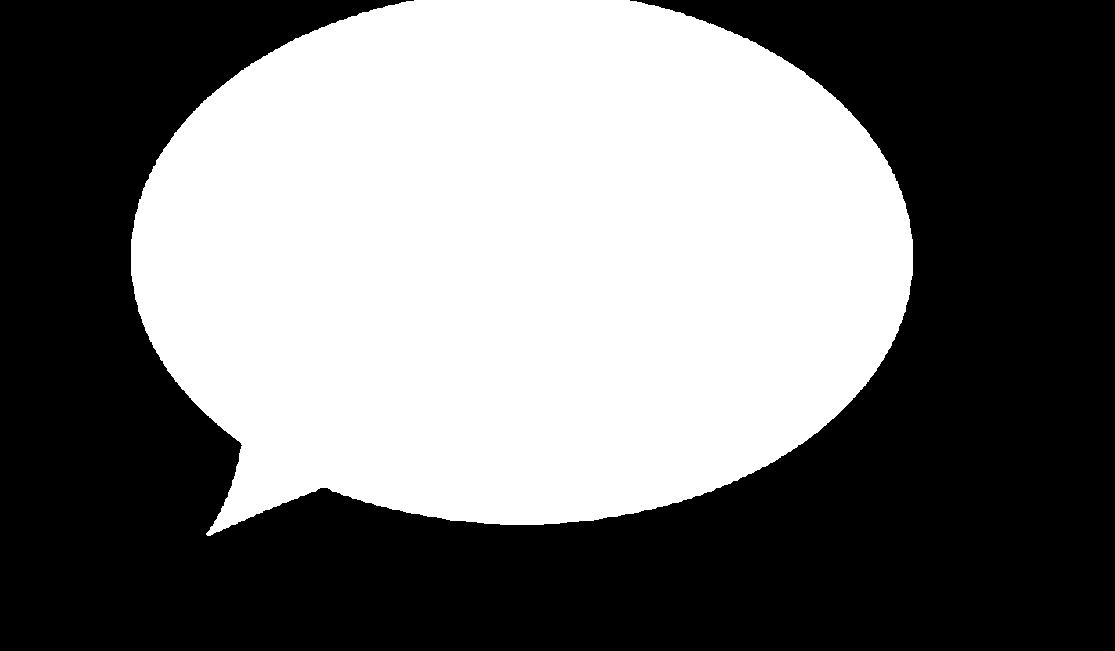
What is your advice to Indigenous women looking to become leaders in their communities and work?

Just do it! If you’re nervous, that’s normal – feeling a little bit anxious, that’s normal too! Look for opportunities such as internships or volunteering to put yourself out there. There will always be someone willing to assist you in your journey, you just need to keep an eye out for them. The best way to climb the leadership ladder is to make as many connections and relationships as you can through networking. The best advice I could give someone is, be the person you wish your younger self could have looked up to!
by Sara Zarriello
A Sojourn in the PM’s Response
The way in which we talk about subjects is directly political, it encapsulates, reinforces and persuades a set of ideals upon passive audiences. This really isn’t a new concept. We do it all the time in ordinary life. Say for example the way that our Australian swearing tends to denote a tone of misogyny. Key examples being: bitch, slut, whore, cunt, etc. It’s clear that the way we phrase subjects is linked to ideologies that we maintain or that were subtly handed down to us by our forefathers (because apparently foremothers don’t exist).
Whilst this can be accidental, taught or desensitised by exposure, it does have frightening implications on the way we view the world. Rhetoric in this form has almost always been used as a tool for perpetuating racism and formalising distinctions between groups whilst promoting certain collectives, usually those that are steeped in Eurocentric ideologies.
A quick dive into the rhetoric of our Prime Minister, the sweetly named Scomo, is an important exercise for every person. We’re gonna break down what Scomo has said and the meaning behind it. Simple as that.
First though, let’s have a quick look at a nifty little Australian phrase as a warm up. Let’s start with every politician’s favourite “it’s un-Australian.”
If we take the words at face value we get the simple fact that whatever it is, it is not Australian. But what does that actually mean? Does it mean it did not come from Australia, to which we draw the conclusion that something not made in Australia and anyone not born in Australia are un-Australian? By using this logic, immigrants who have lived here almost their entire lives and who have been immersed in our culture are un-Australian. Does it mean that it is not of the Australian ideology? That this is not what Australia believes in or values in society? Through this conceptualization a person who has never been to or heard of Australia could be considered “Australian” merely because they fulfill the ideological requirements.
The biggest problem with the term un-Australian is that it tells us what Australia isn’t – rather than what it is, what it believes in or what it values. This use of ‘Orwellian’ language causes so much fundamental slippage in the meaning and makes the term “un-Australian” practically devoid of significance and hence empty rhetoric. The only thing it captures is the philosophy that you are either Australian or you are not – the phrase “un-Australian” removes the issue away from Australia by saying “it isn’t us.”
Maybe that’s what it means to be “Australian.”
Scott Morrison’s comment that, “there was no slavery in Australia,” is probably an honest mistake. I mean if we taught history from a factual perspective, it would be rife with genocide, dehumanisation and slavery, or slavery hidden behind a very, very thin veil of technicality. Yes there were no laws permitting slavery – but there were no laws against it either.
So let’s delve into it.
The question: On closing the gap, there’s been a lot of frustration from First Nations people this week about the lack of tangible progress in achieving those measures. How committed are you to closing the gaps? There’s many of them. And just in terms of your comments yesterday about Australia not having had slavery – do you regret those comments and do you accept that we have seen those actions here in Australia that First Nations have been very upset to hear you make those remarks?
Scott Morrison’s response was rather long winded and probably wouldn’t fit in this article so I’ll give you a brief synopsis with some key quotes:

I’m not racist: in this section Morrison precedes to suggest several reasons as to why he is not racist, more so that he supports Indigenous communities. Rather than apologise he begins with the classic “I’m not racist and here’s why” scenario, I mean he went to the national apology right?
“I’ve had an enduring and committed passion to closing the gap.” “One of the most important things I’ve had the opportunity to participate in as a member of parliament was in those first few weeks, when I was able to stand for the national apology.” “...we have had problems in our past, we have acknowledged those and indeed in our federal parliament, we have acknowledged those.” (Because acknowledging it has definitely fixed the problem…)
Actually technically I’m right: following this he runs into my favourite dialogue choice; the “I’m right about this.” I mean as I’ve said before, not having laws that approve of slavery doesn’t mean that slavery was deemed illegal – ironically enough it really doesn’t mean much. Neutrality and indifference rarely favours the oppressed.
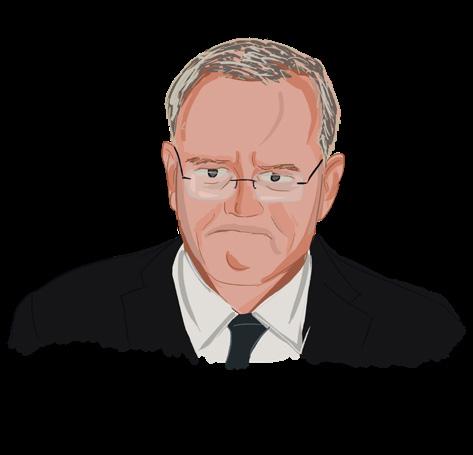
“...one of the principles was to be that Australia, or in that case NSW, was not to have lawful slavery.” “There was not the laws that have ever approved of slavery in this country.”
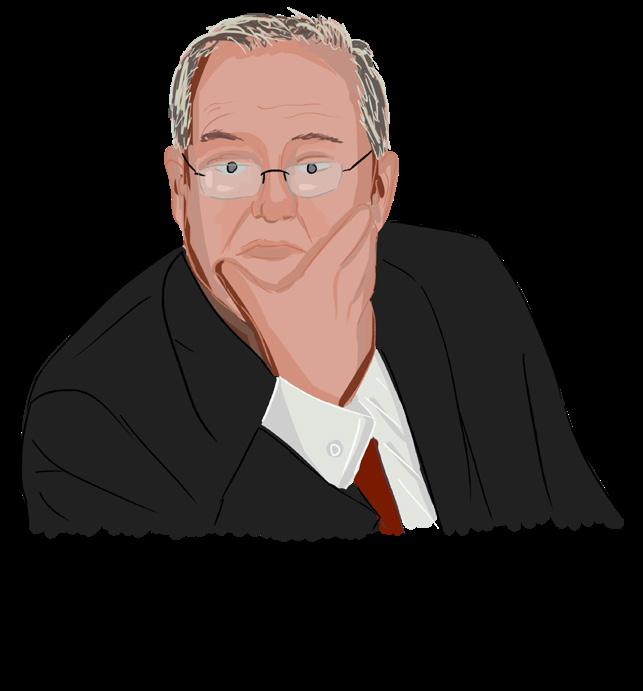
Interesting apologies and more acknowledgment: in this section Morrison apologises, but only for the fact that his comments gave offence. Followed by a quick regression into Actually technically I’m right. In no part of this entire response does Morrison actually apologise for the comments. He does not take responsibility for his words and in fact makes a point that he is only sorry they caused offense. Funnily enough, he never uses the word “sorry” in his apology.
“My comments were not intended to give offence and if they did, I deeply regret that and apologise for that. But this is not about getting into the history wars.” “Australia, yes we have had issues in our history, we have acknowledged them.”
I’m not racist (reprise): again we regress back into the beginning ideology that Scott Morrison is in fact not racist. I mean look how much he cares and invests in Indigenous communities. I mean it’s not like we just had protests because the treatment of First Nations peoples is so appalling. But hey what do we know.

“...those who I work closely with, in this area, would know that personally I have been heavily invested in these issues and I will continue to be heavily invested.”
A tribute to his predecessors: yes in a response to his historically inaccurate (and in my opinion severely ignorant) comments he brings up past Prime Ministers. He spends more time talking about past PM’s and PM responsibilities than he does actually apologising. Need I say more?
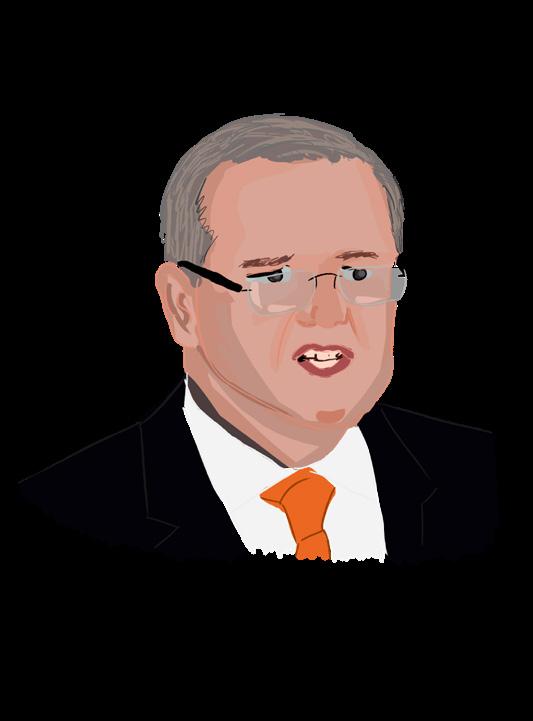
“I pay tribute to my predecessors as Prime Minister because you know when you’re Prime Minister you know this [Indigenous issues] is a responsibility that you have.” “...that [responsibility] has always been the case from either side of politics.” “I generally don’t believe there are large divisions when it comes to the issue of acknowledging the treatment of Indigenous Australians in this country.” (We’ve done a lot of acknowledging Indigenous issues but I haven’t heard a ‘sorry’ or a ‘we really need to do something about it.’)
We’re not racist: this is the sister part to I’m not racist 1 and 2. In this part we back-track into why Morrison is the biggest advocate for Indigenous issues and how Australia is too. It appears that Morrison’s greatest poetic device is repetition – if you say it enough it will eventually become true, correct?
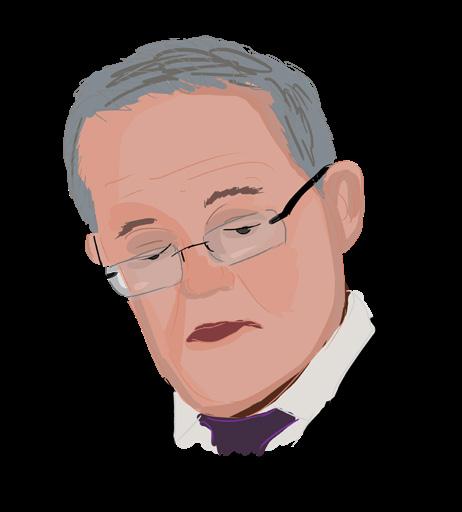
“But I tell you what there is an even bigger passion for and that is to ensure that the passage of reconciliation, the process of improving lives and outcomes of Indigenous Australians is foremost in our minds and I think all Australians of good will and good faith are endeavouring to achieve that.”
If we have a quick review of the entire response, which only lasted about 4 minutes, we find that barely any time is actually spent taking responsibility or even apologising for the comments. This is a simple matter, and the response is also simple – I’m sorry, I will do better.
I could give you a lecture about how history is taught, how our language use perpetuates the “gap” and how we need to properly work with Indigenous communities to make amends. Unfortunately this is unlikely. Morrison’s response here is a perfect reason why.
Properly committing to fixing these wrongs would mean that Australia has to change, that Australia has to take proper accountability for its actions. The truth is our Government doesn’t want to hold accountability. They would rather chase after acknowledgement and merely saying sorry. For them, sorry is enough.
Scott Morrison did get one thing right though – this isn’t about history wars. We don’t care if you don’t think you should deal with these issues because you specifically didn’t cause this. I had a friend much like Morrison who once said to me, “I didn’t cause the Stolen Generations, why should I have to fix it?” Sorry isn’t enough.
This lingering ideology that underpins and contextualises communication with Indigenous communities is the reason change is difficult. The entirety of Australia would have to admit that they are the reason why we see a continued gap between Indigenous populations and the rest of Australia.
Scott Morrison, our elected leader, can’t even say sorry or admit he was wrong. I’m not holding my breath for the rest of Australia.
Blak Business
Grapeshot sits down with Olivia Williams, the founder of the renowned Instagram account @blakbusiness
The Instagram account @blakbusiness first started making waves around January 26th this year. Known as Australia Day to some, and Invasion Day to others, the account provided accessible educational resources explaining the Indigenous perspective on Australia Day and the ongoing issues faced by First Nations peoples since the invasion of their land. Posts such as “Why Do Indigenous Australians Call Australia Day, Invasion Day?” were re-posted on mass to Instagram stories and generated an important conversation about our generation’s relationship with Australia Day.
The now-renowned account was founded by Wiradjuri woman Olivia Williams, who was born and raised on Biripi country, studied in Narrm (Melbourne) and now lives on Ngunnawal Country. In the wake of the recent Black Lives Matter movement, Grapeshot sat down with Olivia to discuss her experiences running @blakbusiness and her views on allyship in the wake of our global reckoning on race.
Can you explain what your Instagram page Blak Business is all about?
At its core, Blak Business is about sharing information relevant to the Aboriginal and Torres Strait Islander community. Information on Blak Business includes significant dates, current affairs, TV programs, resources, creators, businesses, petitions and more. ‘Business’ is a play on the word – it means ‘stuff’ in the same way we say ‘business’ when we talk about Women’s Business, Men’s Business or Sorry Business, this is Blak Business. I strive to make Blak Business really accessible for both our mob and for non-Indigenous people too.
Why did you start Blak Business?
I started Blak Business as a space to share information about the topics I found I was often talking about with other mob and non-Indigenous people too. I felt as though people really wanted to learn more about our community but didn’t know where to start. I create content for Blak Business, share other mob’s content, recommended resources and invite mob to host Instagram story takeovers to share some of their passion and story with followers.
What has the response to Blak Business been like?
The response and support has been so deadly. I’m really pleased that Blak Business has resonated with so many people and that people continue to engage with the page. I really appreciate when followers share Blak Business content with their friends, families, colleagues, schools etc. as there are only a certain number of people I can reach by myself, but [through] the support of followers the content and conversation is opened to more and more people.
What are some of the challenges you’ve faced in running the account, which now has over 70,000 followers?
Blak Business is my passion project that I do outside of my full-time 9 to 5 job. Avoiding burn-out is something I really struggle with. I would like to work towards making Blak Business more sustainable.
I have a few sistas helping me now and it would be deadly to become more financially sustainable so that we could spend more valuable time developing Blak Business. 46
In light of the recent global Black Lives Matter movement, are you hopeful that the struggles and stories of Indigenous Australians will now be more at the forefront of Australia’s social consciousness?
Black Lives Matter is more than just a 2020 movement. For decades we have been speaking the truth and calling for honesty, accountability and change. Nonetheless, it cannot be negated that recent events have brought more people to the conversation. The conversation started before this year and it will continue after this year. We will continue to share our experience and stories and I encourage others to continue to listen, learn and support when it’s not trending.
You provide a wealth of educational resources on your platform. Do you ever feel the emotional labour of providing this education to non-Indigenous peoples?
Blak Business can be very emotionally exhausting. For self-preservation and wellbeing, I am strong on my boundaries. For example, I do not entertain back and forth debates with those who are evidently close-minded to the content being shared, even if I am passionate about the topic. Also, other mob have shared with me that Blak Business has reduced the amount of emotional labour they do. For me this is a really rewarding outcome. If running Blak Business means that mob aren’t subject to as much emotional labour which can have negative impacts on health, then I am so proud to be doing that for my community.
What are the key things non-Indigenous peoples/white folk should be doing in the wake of the BLM movement?
The recent traction of the BLM movements has challenged many peoples long-held ideologies, perspectives and worldviews which can be very unsettling, uncomfortable and overwhelming. I encourage people to sit with this discomfort and persist. You do not need to read, watch, listen, see and do everything all at once; this will only burn you out. Continue to engage with Aboriginal and Torres Strait Islander content, resources and information at a safe pace. Sit with this new knowledge, discuss it with others, reflect on what feelings arise and be open-minded to new perspectives. You can follow social media pages run by mob, listen to podcasts and music from our community, read a book written by an Aboriginal and/or Torres Strait Islander author, encourage conversation with those around you, purchase something from an Aboriginal and/or Torres Strait Islander business, the list goes on...
Olivia’s work has provided important resources for both Indigenous and non-Indigenous Australians to learn, grow and be challenged in their perceptions on race. Anti-racist work is hard, uncomfortable and harrowing, but it is vital. When people like Olivia reach out and speak to non-BIPOC people, it’s important to do the work and listen, so that the emotional labour of Olivia and other First Nations people is not done in vain. To be further challenged and grow in your understanding of Indigenous Australian culture go follow @blakbusiness on Instagram.

by Katelyn Free





